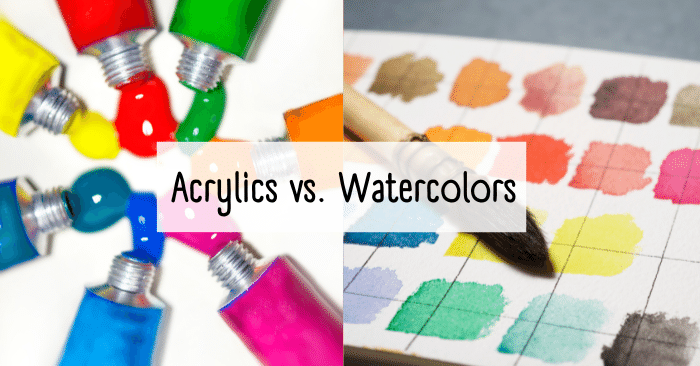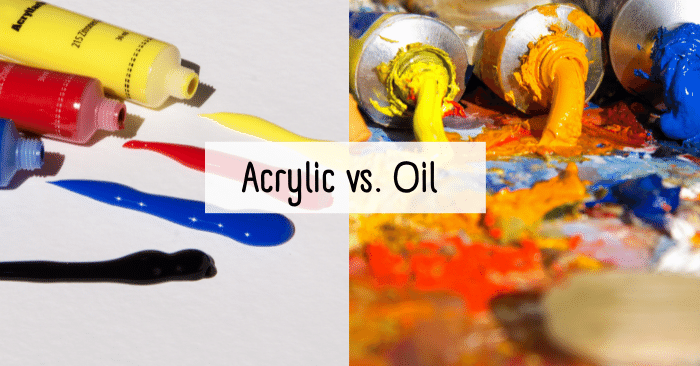
If you’re just starting out with watercolors, you might be surprised when you go to buy watercolor paper and see two options: hot press and cold press. This might seem a little overwhelming, especially if you’re a new artist. But, knowing the difference between the two and selecting the correct one can tremendously improve the quality of your next watercolor project.
TABLE OF CONTENTS
- What is Hot Press Watercolor Paper?
- What is Cold Press Watercolor Paper?
- Why is Texture Important When Choosing Watercolor Paper?
- What is Soft Press Watercolor Paper and When Should I Use It?
- What Else Should you Consider When Choosing Watercolor Paper?
- Cold Press vs. Hot Press Watercolor Paper – Which is Better?
- Key Takeaway
What is Hot Press Watercolor Paper?
Hot press paper (labeled HP) passes through heated rollers or plates in order to press the paper fibers down and produce a smoother paper. It’s more durable than other smooth paper types, such as bristol or illustration, allowing for several, heavy washes of water.
Hot pressed paper is ideal for fine detail projects since the smooth surface allows for extreme precision. It’s well adapted for combining pen and ink with watercolor, opening up a wide range of artistic possibilities.
TIP! For a decent quality hot press watercolor paper that won’t break the bank, I recommend this Strathmore 140-305 500 Series Ready Cut Watercolor Paper. It’s pure white, heavy weight and has a smooth surface that’s perfect for watercolor renderings.
If you’re willing to spend a little extra for a professional-grade watercolor paper, the Arches Watercolor Blocks are my top choice and a favorite of professional artists. They will take a LOT of water without buckling or warping, and the smooth surface is a dream to paint on.
What is Cold Press Watercolor Paper?
Cold press paper (labeled CP) is pressed with cold rollers or plates but, unlike hot press paper, leaves some textured surfaces. The amount of texture can vary, depending on a number of factors, but cold press paper is always more textured, or rough, than hot press paper.
Cold press paper is the most popular and versatile style of watercolor paper. It’s easy to use and more absorbent than hot press.
TIP! Look for a paper that’s at least 300GSM (or 140lbs). The thicker the paper the more forgiving it is (it will take many washes of water without warping or dimpling).
If you’re a beginner, this Strathmore Paper 300 Series Watercolor Class Pack will work as a great practice pad.
Once you’re ready to invest a bit more, I highly recommend the Arches Cold Press Watercolor Pad, which actually comes in a 2-pack. It’s a favourite among professional artists, holds and blends colors beautifully and won’t buckle or warp even after several washes of water. It’s a bit more pricey, but it will make a difference to your final piece!
Why is Texture Important When Choosing Watercolor Paper?
Although it may seem like a minor detail, texture can have a big impact on your finished painting. Not only do you need to use paper that’s durable enough for watercolor but you also need to find the right balance of toothiness. Tooth refers to the amount of texture your paper has – the more tooth a paper has, the rougher it feels.

So, why does it matter how much tooth a paper has and how do you pick the right one for your project?
Tooth can impact the absorbency of your paper, the vibrance of your colors, and the final aesthetic look of your painting. So, choose wisely – texture can make a big difference!
When the paper has more tooth, it will in turn be more absorbent. The bumpy surface of cold press paper, for example, mimics that of a sponge and soaks up the paint, drying quickly. Fast drying is ideal for some artists; however, keep in mind that you’ll have less time to work with your paint, making detailed pieces more challenging with toothier paper.

Likewise, texture can impact the vivacity of your colors. Textured paper can cause colors to appear less vibrant because the bumps will scatter reflected light that hits the surface. So, the smooth surface of hot press paper will produce slightly brighter, more vivid colors than cold press paper would.
Also, paper choice can impact the level of alteration available once the paint dries. Cold press paper will allow for some lifting once dried; however, hot press paper will allow for even more lifting and alteration, giving you more flexibility with your final piece.
Layering is another aesthetic choice you should take into consideration when choosing between hot and cold press papers.
If you’re using cold press papers, your watercolors won’t layer quite as well as they would if you were using hot press papers.
On smoother paper, the layers will build up individually, and the colors will blend a little easier. This technique can add a lot of depth and interest to your watercolor piece.
What is Soft Press Paper and When Should I Use It?
You may have come across another type of watercolor paper labelled “soft press”.
Soft press paper is essentially the middle ground between hot press and cold press. It has a light texture to help with absorbance while also offering the same great benefits of a mostly smooth surface. This allows for detailed work on a slightly textured paper. In essence, it’s the best of both worlds!
However, you might not hear about soft press paper as much as hot and cold press. It’s much less common, and therefore, much harder to come by (and usually more expensive!). But, next time you see some at your local craft store, give it a try! You might prefer this style of paper over the standard options.
What Else Should you Consider When Choosing Watercolor Paper?

As you probably guessed, there are more factors to consider when picking a style of paper, besides hot press or cold press. Understanding the quality of paper and how it’s made is another way to seriously step up your watercolor painting game and create a finished piece that you’ll love.
How it’s made
Watercolor paper is composed and manufactured differently, and both factors impact the quality of the paper itself. The best option for watercolor painting is 100% cotton, free of acids, and pH neutral, like the fan-favourite Arches Watercolor Blocks. Paper can also be created from wood pulp or linen, but cotton fibers are durable without sacrificing flexibility, which is why it is best for watercolor painting.
Machinemade vs Moldmade vs Handmade Watercolor Paper
Even still, cotton paper can be manufactured using several different methods, all of which alter the quality and cost of the finished product. Machinemade paper is the cheapest, lowest quality paper. It’s created by injecting cellulose pulp into a machine with a wire mesh sheet which is then sandwiched between layers of felt. The result is mass produced paper with fibers aligned in one direction. Typically, this paper isn’t very sturdy.
The next best choice for manufacturing is moldmade watercolor paper. Wire mesh, in the form of a cylinder, turns slowly while pulp is poured over the mesh and deposited onto a moving belt of felt. This allows for more random dispersion of cellulose fibers and a stronger paper.

The highest quality and therefore strongest paper is of course handmade. Granted, this is definitely the most expensive choice but for good reason. As the name implies, this manufacturing process is completed by hand and allows for completely interlaced fibers.
Regardless, acid is by far the biggest concern when it comes to paper durability. Acid can cause the paper to become brittle and discolored in no time. You’ll want to avoid this with watercolor painting. Cotton paper is naturally acid free and environmentally friendly when conscientiously manufactured, which is another reason why it’s the best option.
Cold Press vs. Hot Press Watercolor Paper – Which is Better?
While each paper has its pros and cons, here are a few important characteristics to consider when selecting hot or cold press paper for your next watercolor painting:
| Hot Press Watercolor Paper | Cold Press Watercolor Paper |
|---|---|
| Smoother surface | Textured, bumpy surface |
| More durable | Less durable |
| More vibrant colors | Less vibrant colors |
| Less absorbent | More absorbent |
| Dries slower | Dries quicker |
| Allows for more lifting and altering | Allows for some lifting and altering, but not as much as hot press |
| Better for precision and detailed work | Great for all types of watercolor painting |
| Easier layering and blending | More difficult layering and blending |
Key takeaway
Ultimately, choosing between hot press and cold press paper can have a major impact on the final results of your next watercolor painting. They both have their benefits, and they both have their disadvantages. It truly depends on your skill level and the style of painting you want to create.
As a general rule of thumb, go with hot press paper when you want to spend extra time filling in all the little details or when you plan to incorporate a lot of lifting or layering. Alternatively, go with cold press paper if your project requires less detailing and you want the paper to absorb the watercolors quicker.




